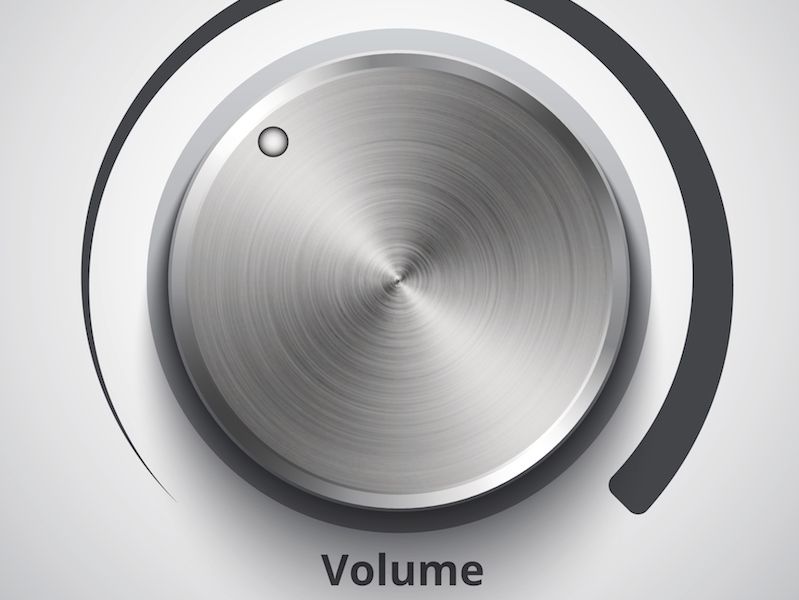
You ever go to the beach and see one of those “Beware of Shark” signs? It’s not hard to understand that you shouldn’t dismiss a caution like that. You might even think twice about swimming at all with a sign like that (if the warning is written in big red letters that’s particularly true). Inexplicably, though, it’s harder for people to pay attention to warnings about their hearing in the same way.
Current research has found that millions of individuals neglect warning signs when it comes to their hearing (this research exclusively considered populations in the UK, but there’s no doubt the concern is more global than that). Knowledge is a big part of the issue. To be afraid of sharks is rather intuitive. But the majority of individuals don’t have an overt fear of loud sounds. And the real question is, what’s too loud?
Loud And Dangerous Sound is All Around us
It’s not just the machine shop floor or rock concert that are dangerous to your ears (although both of those situations are, indeed, hazardous to your hearing). Many common sounds can be hazardous. That’s because exposure time is as harmful as the volume. Even low-level noises, such as dense city traffic, can be harmful to your hearing if you are exposed for more than a couple of hours.
keep reading to find out when sound gets too loud:
- 30 dB: Everyday conversation would be at this volume level. At this volume, there won’t be any limit to how long you can confidently be exposed.
- 80 – 85 dB: This is the sound level of heavy traffic, lawn equipment, or an air conditioner. This volume will normally become dangerous after two hours of exposure.
- 90 – 95 dB: A motorcycle is a good example of this sound level. This level of exposure becomes dangerous in as little as 50 minutes of exposure.
- 100 dB: This is the amount of sound you may encounter at a mid-size sporting event or an oncoming subway train (depending on the city, of course). This level of sound can become hazardous after 15 minutes of exposure.
- 110 dB: Have you ever cranked your Spotify music up to max volume? That’s normally around this sound level on most smartphones. 5 minutes will be enough to be dangerous at this volume.
- 120 dB and over: Immediate pain and damage can occur at or above this level (think about an arena sized sporting event or rock concert).
How Loud is 85 Decibels?
Generally speaking, you should look at anything 85 dB or above as putting your ears in the danger zone. The problem is that it isn’t always obvious just how loud 85 dB is. A shark is a tangible thing but sound is not so tangible.
And hearing cautions often go ignored for this reason when the sound environment isn’t loud enough to cause pain, this is specifically true. There are a couple of possible solutions to this:
- Download an app: Your hearing can’t be immediately safeguarded with an app. But there are a few sound level metering apps. Damage to your ears can happen without you realizing it because it’s tough to know just how loud 85 dB feels. Utilizing this app to monitor sound levels, then, is the solution. Utilizing this method will make it more instinctive to distinguish when you are moving into the “danger zone”. (Or, the app will simply tell you when things get too loud).
- Sufficient signage and training: This particularly refers to workspaces. The real risks of hearing loss can be reinforced by signage and training (and the advantages of protecting your hearing). Signage could also make it clear just how loud your workplace is. Training can help employees know when hearing protection is required or suggested.
If You’re in Doubt, Protect Yourself
No app and no signage will ever be 100%. So make the effort to safeguard your hearing if you have any doubt. Over a long enough period of time, noise damage will almost certainly create hearing issues. And it’s easier than it ever has been to damage your ears (all you need to do is turn your headphone volume up a little too loud).
You shouldn’t increase the volume past half way, particularly if you’re listening all day. You require noise cancellation headphones if you are continually turning up the volume to block out background sound.
So when volume becomes too loud, it’s important to accept it. Increasing your own knowledge and recognition is the key if you want to do that. Safeguarding your ears, using ear protection, or limiting your exposure, is easy enough. But you have to know when to do it.
Nowadays that should also be easier. Particularly now that you understand what to look for.
Think you could have hearing loss? Make an appointment.